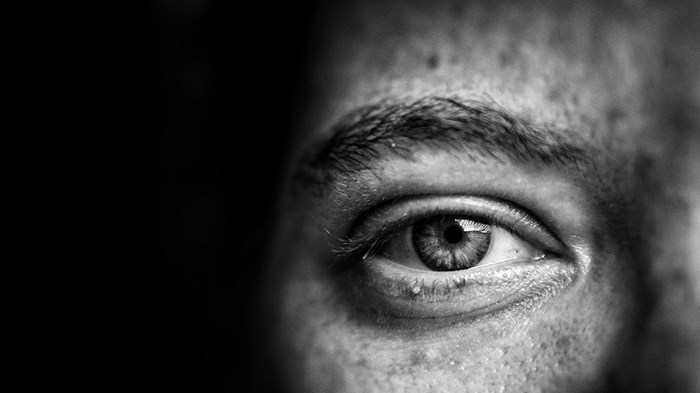3 Things Preventing Your Church Members from Accessing Mental Health Care

Adapted from Madness & Grace: A Practical Guide for Pastoral Care and Serious Mental Illness, published by Templeton Press.
Since it’s very beginning, the Church has been involved in social justice movements to serve and comfort the “least of these.” It has always stepped up to be the hands and feet of Jesus here on earth, whether the problem was orphans, widows, slavery, poverty, or disease.
Many of these causes were popularized within the Church through board movements. Often these movements began out of necessity because the particular need or injustice was so great. Hundreds of millions of people have been served through these church movements and, even more importantly, hundreds of millions around the world have heard the Gospel.
Presently, active movements within the Church include racial reconciliation, homelessness, human trafficking, access to clean water, and hunger. All of these are important issues, but I have often wondered why there has never been a movement focusing on one of societies most marginalized groups, those living with mental illness.
The World Health Organization estimates that worldwide, 450 million individuals are struggling with a mental health problem. In the United States, one out of every five individuals meets criteria for a mental illness in a given year. Perhaps more disturbing is the fact that the majority of adults and children diagnosed with these conditions never receive any treatment. Untreated mental health problems can lead to loss of employment, academic failure, homelessness, addiction, imprisonment, and suicide.
Once an individual or family attempts to engage the mental health care system, they are quickly confronted by a set of obstacles which significantly hinder their ability to actually access services. The common barriers to accessing mental health care can be placed into three broad categories: availability, affordability, and acceptability.
Availability.
There are simply not enough mental health care providers to meet the growing demand for care. The U.S. Department of Health and Human Services estimates that a third of all U.S. residents (113 million) live in an area designated as having a mental health professional shortage. Over half of U.S. counties have no practicing psychiatrist, while a third have no psychologist. Access to care is also hindered by a serious shortage of psychiatric beds. There are fewer than 100,000 psychiatric beds available in the U.S. As a result of the lack of beds, there are ten times more individuals with mental illness in our jails and prisons than in psychiatric hospitals. Our emergency rooms have become de facto psychiatric crisis clinics. Finally, with providers and facilities being few and far between, transportation becomes a significant barrier to accessing care.
Affordability.
Cost is the primary reason that individuals report being unable to access mental health care. Health insurance reimbursements to providers are far less generous for mental health conditions than for physical health issues, despite the Mental Health Parity and Addiction Equity Act signed into law by President George W. Bush in October 2008. Many health insurance policies don’t even cover mental health care.
This has caused many mental health providers to require payment directly from the patient rather than accept insurance. A recent study found that only 55% of psychiatrists accept private insurance or Medicare. Even fewer accept Medicaid (43%). This same trend has occurred with psychologists as well, further limiting the mental health care providers available to most patients.
Acceptability.
Negative attitudes and beliefs toward people who suffer with mental illness are common. In fact, social stigma is the second most common reason reported for not accessing mental health care. Myths—such as individuals with mental health problems are violent, lazy, or demon possessed—permeate our society.
In a recent survey, a third of individuals with mental health problems reported worrying about others judging them, while a quarter said they had actually lied to avoid telling people they have sought mental health services.
This difficulty in access to care is one of the reasons that individuals in psychological distress are more likely to seek out assistance from a minister before a primary care physician or mental healthcare provider. In fact, research shows that the level of psychopathology in those seeking help from clergy is the same as those seeking assistance from psychiatrists.
Viewed through the eyes of faith, it is obvious that this is not an accident but rather a divine opportunity for the Church to take the lead in caring for those afflicted by mental illness.
Unfortunately, a majority of clergy report feeling inadequately trained to recognize the presence of mental illness in those they counsel. As a result, fewer than 10 percent of distressed individuals seeking counseling from pastors are referred to mental health professionals.
In addition, few faith communities offer programs, services, or resources for congregants living with mental illness, even though a majority of these individuals and their families report that they desperately want their church to be more involved in their care.
For the Church to transform the mental health care system, it is not necessary for every congregation to be involved at the same level. It is only necessary that each congregation become involved.
Matthew S. Stanford, PhD is CEO of the Hope and Healing Center & Institute and Adjunct Professor of Psychiatry at Baylor College of Medicine and the Houston Methodist Hospital Institute for Academic Medicine. He is the author of Madness & Grace: A Practical Guide for Pastoral Care and Serious Mental Illness published by Templeton Press.
The Better Samaritan is a part of CT's
Blog Forum. Support the work of CT.
Subscribe and get one year free.
The views of the blogger do not necessarily reflect those of Christianity Today.






















